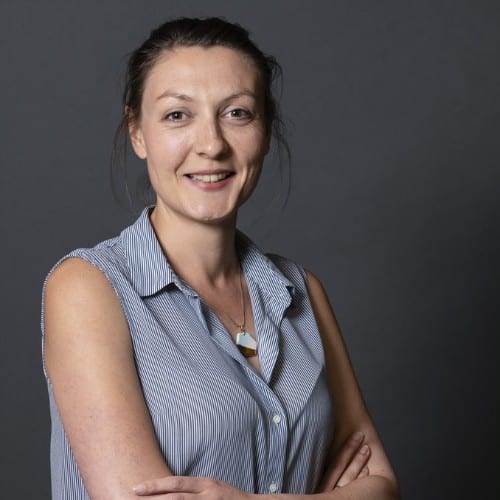Smart Energy in Orkney
A visit to the Scottish isles of Orkney unveils an innovative smart energy system, writes Anna Stegman, technical liaison manager for the Energy Revolution Integration Service at the Energy Systems Catapult.
17th February 2020 by Networks

As most of the country grapples with the challenge of squeezing more renewables into the energy mix, it’s surreal to think there are some places generating so much clean power they’re having to curtail it to avoid overloading the grid.
Yet that is the position the Scottish isles of Orkney have found themselves in. Once dependent on imported coal and gas from the Scottish mainland, the archipelago’s landscape is now adorned with wind turbines, while many of the houses have solar panels on their roofs. Innovative technologies like tidal turbines, and wave energy devices can be seen from shore, and there’s even a hydrogen fuelling station used for some of the council’s fleet of vehicles.
Interest in these projects is high around the islands, but not just from engineers and energy specialists. Even my taxi driver was very keen to point out that Orkney is at the cutting edge of sustainable energy!
As Orkney is already experiencing the impact of significant intermittent generation, the ReFLEX Orkney project is presenting invaluable opportunities to demonstrate the benefits of storage and demand-side management that a smart, flexible and fair energy system can deliver.
Orkney does face some issues when it comes to energy. Prices are typically very high, partially due to the amount of fuel needed for heating and transport. Plus, there is no gas network and therefore homes and businesses rely on either electricity or oil to provide heat. This, in conjunction with Orkney’s older housing stock and the local climate, mean the area has one of the highest fuel poverty ratings in the UK (63%).
Despite the island’s significant renewable energy resources and generation capacity, a constrained network is causing high levels of ‘curtailment’ – where wind turbines are switched off to protect the network from overloading. This limits the economic efficiency of existing turbines, and the ability to install more capacity that will be required as the demand increases to support electric vehicles, and the amount of electrified heating systems.
This opportunity to harness the excess renewable energy generated that is currently wasted, along with a will to increase the amount of low carbon energy and reduce fuel poverty, forms the main driver for the ReFLEX demonstration project.
Domestic and large-scale batteries with smart controls are being installed to optimise the charging and discharging cycles, along with flexible heating systems for hot water storage and smart chargers. The local leisure centre plans to use a hydrogen-fuelled combined heat and power plant (CHP) and up to 600 new electric vehicles are being introduced to the island.
For ERIS, one of our objectives is to understand where the common challenges and barriers are in relation to developing smart energy systems, drawing on the expertise from within the energy systems organisations to help overcome them.
For example, to be able to improve a local area, it is vital to understand the current energy system. This not only includes the generation technology and the network assets, but also the across- the-board demands which are dependent on many factors.
To support the Orkney project, as well as the others taking part in the government’s Prospering from the Energy Revolution programme, we have developed our Local Energy Asset Representation (LEAR) model which recognises that all areas are different and the ‘right’ transition solution will vary depending on the buildings, geography, rurality, existing assets and, most importantly, residents.
The ReFLEX team is clearly passionate about this project, and it’s clear that this three-year demonstrator project is just the start for them. It will deliver some fascinating and invaluable learnings which we in ERIS can’t wait to share with other energy system innovators around the UK and beyond.
Anna Stegman is technical liaison manager for the Energy Revolution Integration Service (ERIS), an Energy Systems Catapult project.
Comments
Login on register to comment
Related content

Gas
Cadent backs launch of major bio-CNG HGV refuelling station
Gas network’s £250,000 infrastructure investment ensures supplies to existing connected customers have not been impacted

Gas
Editor’s blog: The biggest tests of resilience are yet to come
Network content director Jane Gray reflects on the industry's coronavirus response to date and the challenges still to come.

Gas
From the front line: Chris Garside and Andy Simcoe, Northern Gas Networks
Key workers across the power and gas networks are playing a critical role in the national response to Coronavirus. Network has committed to profiling their stories.
Related supplier content

Power
Load patterns and lockdown: how Covid-19 is impacting electricity networks
Insights into dynamics on the low voltage network as the outbreak unfolds

Downloads
Protect electrical equipment from insulation failure
Insulation faults are a major cause leading to the eventual failure of electrical equipment. Partial discharge (PD) is a very reliable indicator of developing insulation faults. Regular PD testing allows users to detect and analyze PD activity

Heat
How E.ON. is helping the City of London become a zero emissions city
Discover Citigen. Deep in the heart of our bustling capital